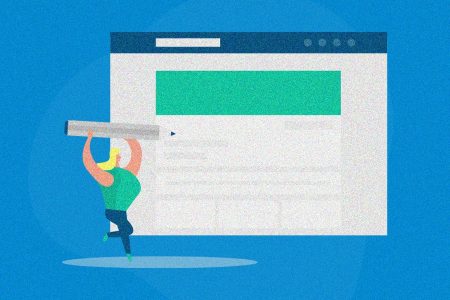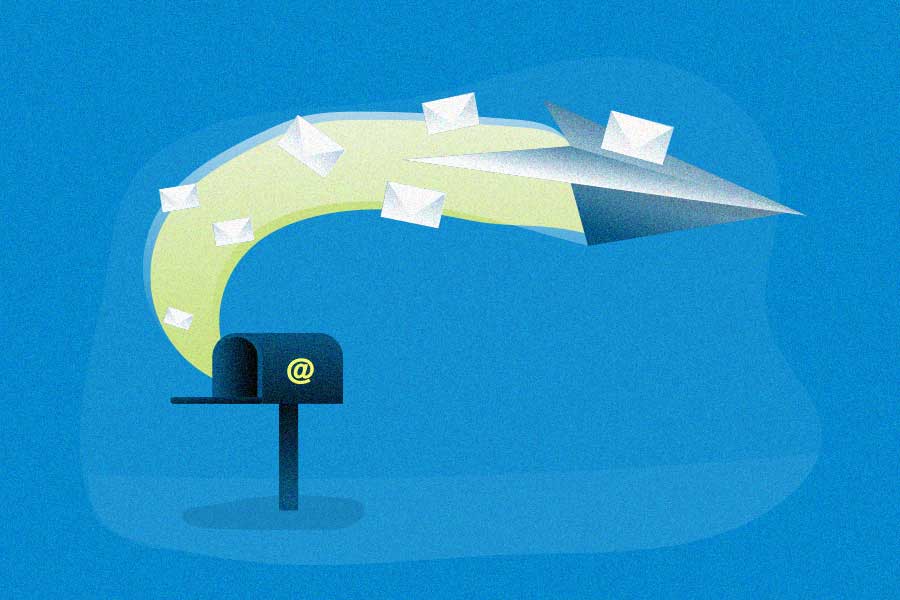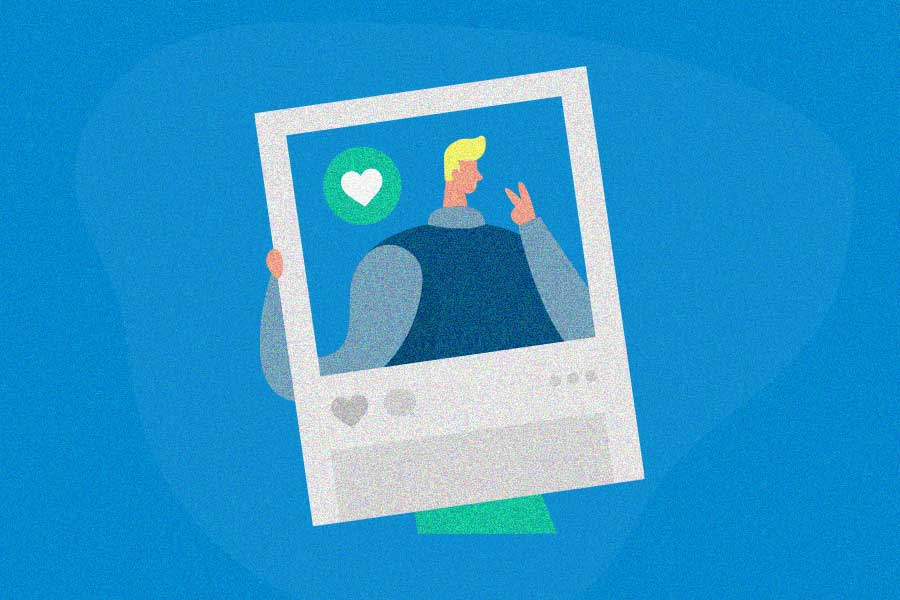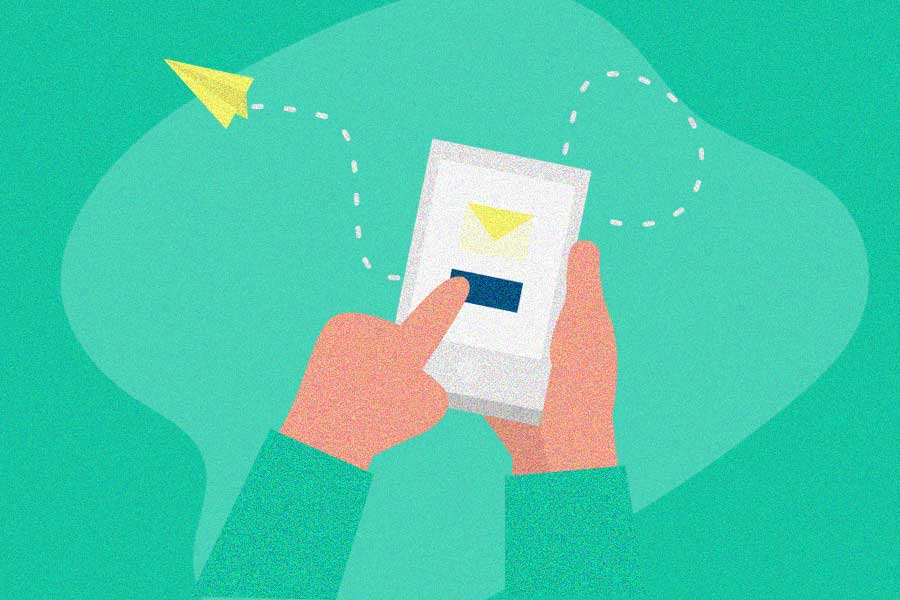One of the most overlooked items of a referral marketing program is the referral landing page, where people sign up to join your referral program. You have thought about all aspects of your referral marketing campaign in great detail. Now you need to figure out how you’re going to display the program.
You may be wondering what components you need to have a successful landing page redesign. Don’t worry: We’ve got you covered with our list, featturing some of the best referral program landing page examples.
Creating a successful referral landing page: Why it’s vital
You want your referral program landing page to be appealing, convenient and informative. The landing page will either make someone want to sign up or it will make them run. If something looks confusing, boring or difficult, chances are the user will exit without giving it a second look. This means you won’t get as many new customers through the program (because if customers aren’t sharing, you won’t see a boost in conversion rates).
But an appealing landing page will increase your referral rates, generate more word-of-mouth marketing, help you build social proof, and mobilize more customers as brand ambassadors. This will bring you a higher likelihood of new customer conversions, and increase your customer base. And since referred customers are more likely to stick with your business, you’ll also see a boost in customer loyalty and retention.
Referral landing page examples
Looking for inspiration as you build your referral program landing page? Check out the high-quality referral program landing page examples below. They all highlight key features that are needed for a quality landing page:
- A compelling headline
- Eye-catching images
- Benefits of referring (including rewards)
- A short description of how the program works
- Elements that make sharing easy
- A clear call-to-action
Harry’s
Razor brand Harry’s nails the benefits aspect with their tiered program landing page: they offer more rewards the more friends someone gets to sign up. The headline gets to the point, it’s easy to understand how the program works, and there are multiple options for sharing. And check out the eye-catching mammoth as the hero image!
Tip to steal: Running a tiered referral program where rewards increase with every successful referral? Try using a reward tracker like Harry’s does.
Omsom
We love how Omsom catches your eye with the yummy hero image, featuring meals you can make with the brand’s authentic Asian meal starter packets. The headline advertises the reward and grabs the customer’s attention with the fire emoji. Then, Omsom concisely explains how to reap those referral program benefits. The CTA is easy to find, in purple with the “refer friends” text. And after someone has clicked, all they need to do is give their email and choose how they’ll share with a friend.
Tip to steal: The give and get headline is an awesome and catchy way to introduce your own referral program, especially if you’re offering similar rewards for referrer and friend.
MeUndies
MeUndies starts off strong with a super-catchy headline, then explains the rewards of sharing the brand. It’s easy for customers to start sharing, as they just need to enter their email and click the CTA. A humorous pre-written message for the referred friend, written in the referrer’s name, means existing customers don’t need to think of what to say before they invite friends.
Tip to steal: Create a message that sounds like the referrer wrote it, so it’s easy for customers to share. But give them room to add to their message for maximum authenticity.
MOO
MOO places the incentives right in the headline, and gets straight to the point by inviting customers to refer a friend. The hero image displays its own headline that also describes what customers will get for referring. And the seven sharing options (including several for social sharing, plus the direct copy of the referral link) really stand out.
Marketing strategy to steal: Although you don’t need two headlines, you might try to place headline text (or text describing the reward) on top of the hero image to draw people in. Just make sure you don’t make things too cluttered.
Tabbed Out
Tabbed Out is an awesome example of how to create a mobile app referral landing page. The page is easy to find in the menu, the reward is displayed promimently, and it’s super easy to tap and share the referral code. A referral tracker with “sharing status” and the amount earned is a great motivator. Even with no traditional hero image (the reward in the circle functions as the hero), it’s still an effective landing page.
Tip to steal: Over half of your customers will browse your site on mobile, so even if you don’t have a mobile app, you’ll need your referral landing page to be mobile-friendly.
Key elements for your referral landing page
Why do the above referral landing page examples work so well? As we covered in brief above, there are a few key template ingredients that will help you create the perfect landing page for your customer referral program:
- Catchy headline or title
- Navigation
- Imagery
- CTA
- Benefits of referring
- How the program works
- Elements that make sharing easy
Here are all the details of how they come into play, along with even more examples that show these elements at work.
1. Catchy headline or title
The headline or title is your landing page’s opener – it is the first thing customers will see and read, in the biggest font. If you don’t “WOW” someone with this opener, they will not explore the page that long.
The headline must be as catchy and enticing as possible. It needs visual appeal to grab customers’ attention right away, and it should be intriguing enough to convince them to stick around for more.
Your headline must be easy to understand, so keep it short and sweet. And ultimately, it should communicate what customers should do (share) and what is in it for them (the rewards).
After all, it’s all about motivating your customers to share your brand, so you owe it to yourself to make referring irresistible as early as you can.
Things to consider:
- Is it simple? Make it easy for potential users to understand.
- Is it uncomplicated? Complicated and gimmicky make it less appealing to customers.
- Is it applicable? If it’s not relevant to the user – chances are they won’t be interested.
Do you need help creating a catchy headline? Here are 5 easy tricks to write catchy headlines, by Jeff Goins. Make sure you follow him on Twitter @JeffGoins. Here is a good example of a simple yet catchy headline. Trendy Butler gets right to the point with what this landing page is all about. Plus, they mention the purpose of the page. Boom – (the What) “Friends and Family Program”. Bam – (the why) “$10 for every sign up”. They kept it simple, uncomplicated and applicable to their customers.
2. Navigation
While this is not technically a part of the landing page, making your landing page easy to locate is paramount. After all, customers must easily be able to find the page before they can use it to do any sharing. If your users have a hard time navigating to and from the page, things might crash and burn.
Your best bet is to be simple and visible. Place links to your referral landing page in your navigation menus, so customers can access the landing page from all other pages of your site (including from your homepage). You may opt to have your referral program as its own option on your navigation menu. Or it may, perhaps, be a secondary option.
The program link needs to be a simple but visible part of the navigation bar(s). The text of the link could read “share [brand name],” “refer a friend,” or “get [the reward].” You could also display a link to the referral program elsewhere on the homepage.
Things to consider:
- Is it over the top? Yes, you want it to be noticeable, but remember it’s not an attraction at the zoo. You still want your main content to be seen. So, blinking lights are not necessary.
- Is it confusing? From now on, just note that things need to be simple. Always. Navigating the landing page (or your site, for that matter) should not be confusing. If it is, then you can kiss conversions goodbye.
Here is a perfect example of landing page navigation (or navigation to get to the page). Dappertime places a link to their referral program page right on their main site menu. This will allow their customers to easily find the landing page, and take action. They make sure it’s findable without being over the top or confusing.
3. Imagery
Our brains process visual data like images faster and better than text. Take full advantage with a hero image! You need one main image that will impress and explain the purpose of the landing page. This image is not meant to be a bystander on the page – it’s supposed to take center stage.
The hero image’s purpose is to tell the story of your referral program, or give off a particular feeling (i.e: happiness or excitement are good things to aim for). It needs to impress visitors and encourage them to learn more about the referral program. This image will explain what words are unable to.
Your hero image could illustrate:
- The reward on offer
- Friends hanging out
- Friends helping each other, or
- Customers enjoying your products
Sure, you can use other imagery – but don’t let things get too cluttered.
Things to consider:
- Is the hero image relevant? Make your images do the talking for you. If you’re a cupcake shop, you may not want to use a burger as the hero image on your landing page. Unless you can somehow make it relevant to you, steer clear.
- Is it gripping? It’s called a “hero image”. This image needs to help catch attention. Pair a great, clear and meaningful image with an awesome title, and you’ll be all set.
A stunning example of imagery, the Greats referral program landing page looks clean and sharp. Plus, they used a killer hero image that displays what they’re all about. They display the image right above their text, and voilà, it’s easy to follow along with this landing page.
4. CTA
Next, you need something that lets the user know what their next move should be. Take the guesswork out of it by using a clear call to action button (CTA). Similar to the CTA buttons found on most landing pages, this is the button that customers need to click and start sharing with their friends. A referral CTA is how you convert your users into your program members. Once they click this button, your customers become your brand ambassadors!
The CTA button must be highlighted, easy to find on the page, and simple to use. Without a CTA, visitors may not realize what exactly they need to do to move forward, and are likely to exit for another page before sharing.
The CTA should explain what you want customers to do through an actionable word or phrase. Keep it short yet informative, using just one to three words. For example, the button could read “Share now,” “Start sharing,” “Invite friends,” “Refer friends,” or “Get [reward].”
Things to consider:
- Is it insightful? Make sure the user has a clear understanding of what they are clicking on.
- Is it catchy? The call-to-action button should stand out. Again, this doesn’t mean light it up like the Hollywood sign. It just means that the button needs to be clear and visible. Your CTA needs to have a distinct color from the background. That way, it will stand out and be easily noticeable.
- Is it easy to find? CTA placement is important. If it’s in a weird location, people may glance over it. It’s best if you place the CTA above the fold, so customers won’t have to scroll to find it. (Note: If you do have a long scrolling page, have a CTA in many locations. Try on or under the Hero Image, at the bottom of the page, on the side as a static option). No matter where you may place your CTAs, they need to make sense and be visible.
Let’s see an example of a good CTA. True&Co hits the nail on the head quite well. The CTA is clear. It’s placed in a findable spot. Plus, it’s catchy – not to mention it’s gold! Who doesn’t want to press a golden button?
5. Rewards and benefits
This is your opportunity to convince the user to sign up. Customers want to know what’s in it for them – the referral reward. Describe the referral rewards, incentives, and other benefits in the most interesting way possible. Make it so the user knows exactly why they should sign up.
Clearly communicate the exact reward customers will get for a successful referral. If you didn’t capture this info in the headline, mention it right below the title so customers can instantly get what they want to hear.
If the referred friend can also earn a reward, include that info as well. You may also talk about intrinsic rewards the customer will receive, like the satisfaction of helping a friend benefit from a product or service they need.
Things to consider:
- Is it compelling? Make sure the user can understand how signing up will benefit them.
- Is it descriptive? Make sure you’re not just slapping the features down. Explain the benefits.
- Is it wordy? Yes, you want it to be descriptive, but keep things to a minimum. When things get too text-driven, the user may lose focus.
Need an example of good benefits? Wool Overs does a great job at explaining the benefits of joining their referral program. They use a short blurb to explain the benefit (a 20% discount coupon) right under the headline. Wool Overs keeps it short and sweet, but also informative.
6. How the program works
Besides mentioning the rewards and benefits, let customers know what needs to happen for them to receive the reward. Ordinarily, the new customer they refer will have to make their first purchase. Explain this in a concise manner, but capture all the necessary details.
Essentials to cover on the landing page include:
- The how (what needs to be done)
- The when (the time they’ll receive the reward)
- The who (who gets rewards, whether that’s the existing customer and their friend or just the existing customer)
Consider using a step-by-step format to communicate how your program works – and just how simple it is. And leave a good amount of white space, so things aren’t overwhelming.
7. Easy sharing
Make sharing easy by providing different sharing options. This encourages referrals as it allows customers to share with friends and peers in all the ways they usually share other exciting things.
Include various sharing channels, including email, SMS, and social media. A social media sharing option is critical, since a social share will reach many of the customer’s friends at once.
On top of that, you should let customers directly copy their unique referral link to easily paste and share with anyone, anywhere. Freshly gives existing customers loads of options for sharing, and concisely explains how the program works (including with the step-by-step list to the left). Plus, once they sign in, they get access to a unique referral link for even easier referrals. ![Top 11 Referral Landing Page Examples [+ 7 Must-Haves] 12 freshly-referral](https://referralrock.com/blog/wp-content/uploads/2021/06/freshly-referral.jpg)
Referral landing page tips
As we promised, here are some great tips used by the best referral landing pages to steal and promote your referral program for more new customers:
- Let customers know exactly what you want them to do and what’s in it for them: As concisely as possible, make sure customers know what they need to do (share) and what they stand to gain if they make a successful referral (the reward).
- A/B test out different messaging and layouts on your landing page: When it comes to your referral landing page design, it’s never a bad idea to A/B test various aspects of the page, including the wording, colors, visuals, and layouts. Continue testing the best-performing landing pages until you’ve found a consistent high performer.
- Utilize the white space: Like with any other landing page, your referral landing page layout needs to be uncluttered. Include only the essentials and leave plenty of white space.
- Consider including testimonials: Do you have customers who have had a great experience with your referral program? If so, consider incorporating a few of their testimonials for a better impact.
- Consider a video: You might consider adding a hero video, or hero slideshow, in place of the main image. Not many referral landing pages do this, so this will make yours stand out.
- Add a referral FAQ: Do you have other terms and conditions you need to cover, but that could make your landing page too cluttered? Create a separate referral FAQ section, and link to that from your landing page.
- Promote your referral program: Tell customers about your referral program via email, social media, and other marketing campaigns. Be sure to attach links to your referral landing page within every promotion.
- Use referral software: Using referral marketing software streamlines all aspects of running a referral program – including making your referral landing page extremely easy to build. The software will automatically incorporate all the referral link tracking elements for you.
The bottom line for a successful referral program landing page
Make sure that whatever imagery, wording, or CTAs you use on your referral landing page, the user knows exactly what the purpose is. You want to make the user confident in their decision and you want to avoid accidental clicks.
You’ll also find that a lot of these rules apply to your referral message, or the message the referred friend sees (which can be on a dedicated landing page in your program too).
It’s also good practice to optimize your landing page to bring in the most shares. Optimization involves A/B testing different variations of your landing page, to see what copy, images, and layouts work best.
And of course, you’ll need to promote your referral program, so customers will come to your referral program landing page and sign up. Email marketing campaigns and social media posts are great ways to promote the program, and direct customers right to your landing page.
What’s the quickest way to create a referral program landing page (and automate all aspects of your referral program)? Turn to referral program software.

![Top 11 Referral Landing Page Examples [+ 7 Must-Haves] 1 harry's referral program full page](https://referralrock.com/blog/wp-content/uploads/2023/02/harrys-referral-program-full-page.png)
![Top 11 Referral Landing Page Examples [+ 7 Must-Haves] 2 omsom referral landing page](https://referralrock.com/blog/wp-content/uploads/2016/09/omsom2023-1.png)
![Top 11 Referral Landing Page Examples [+ 7 Must-Haves] 3 me-undies-referral-page](https://referralrock.com/blog/wp-content/uploads/2019/06/me-undies-referral-page.jpg)
![Top 11 Referral Landing Page Examples [+ 7 Must-Haves] 4 moo referral Landing page](https://referralrock.com/blog/wp-content/uploads/2016/09/moo-Landing-page.png)
![Top 11 Referral Landing Page Examples [+ 7 Must-Haves] 5 tabbed-out-image](https://referralrock.com/blog/wp-content/uploads/2019/12/tabbed-out-image.jpg)
![Top 11 Referral Landing Page Examples [+ 7 Must-Haves] 6 trendy butler referral program landing page](https://referralrock.com/blog/wp-content/uploads/2016/08/trnedy-butler.png)
![Top 11 Referral Landing Page Examples [+ 7 Must-Haves] 7 dappertime landing page](https://referralrock.com/blog/wp-content/uploads/2016/08/dappertime.png)
![Top 11 Referral Landing Page Examples [+ 7 Must-Haves] 8 greats referral landing](https://referralrock.com/blog/wp-content/uploads/2016/08/greatslanding.png)
![Top 11 Referral Landing Page Examples [+ 7 Must-Haves] 9 true landing page and CTA](https://referralrock.com/blog/wp-content/uploads/2016/08/landing-page.png)
![Top 11 Referral Landing Page Examples [+ 7 Must-Haves] 10 woolovers landing page](https://referralrock.com/blog/wp-content/uploads/2016/08/landing2.png)
![Top 11 Referral Landing Page Examples [+ 7 Must-Haves] 11 nash referral explanation](https://referralrock.com/rms/wp-content/uploads/2022/03/nash-referral-explanation-1024x502.png)



